Gramophone Collection: Schumann’s Second Symphony
Richard Whitehouse
Wednesday, November 20, 2019
Nine decades of recordings reflect changing attitudes to Schumann’s Second, finds Richard Whitehouse
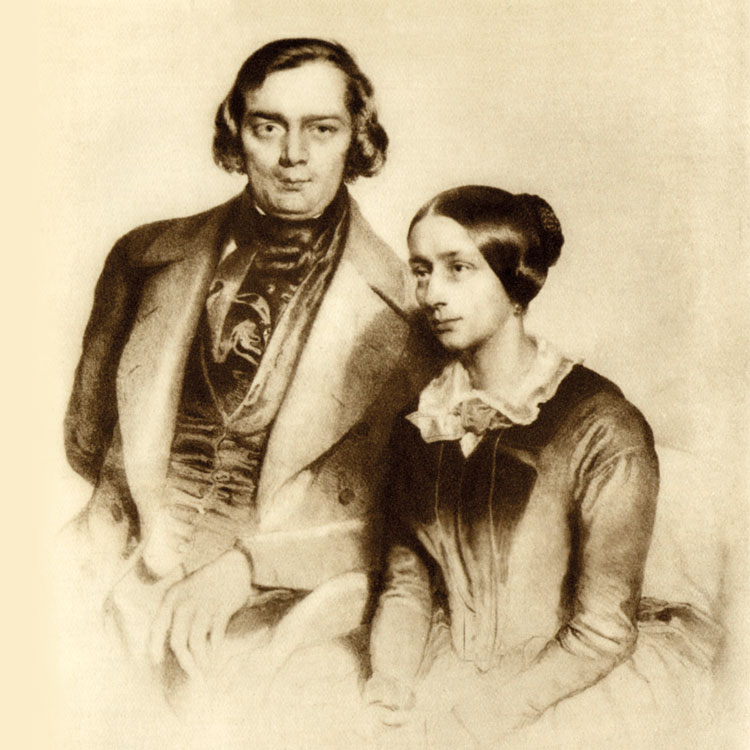
The mid-19th century is still referred to as one of marking time for the symphony – when composers fought shy of the challenges posed by Beethoven, until Brahms rounded off the long genesis of his First Symphony in 1876. A primary factor in this was the tendency in the early and mid-Romantic eras to conflate abstract evolution with evocative or illustrative elements. Mendelssohn, his teenage First Symphony the only one of his five designated such works with no programmatic intent, is a case in point – as, more ambivalently, is Schumann.
A composer who had hitherto focused on piano cycles of a more or less illustrative nature was unlikely to jettison this approach when tackling the symphonic genre. The Spring Symphony, his First, duly combines such aspects with a relaxed take on formal precepts. While the D minor Symphony eschews extramusical conceits, its formal radicalism bewildered listeners and it was extensively overhauled as his Fourth; together with the overtly descriptive Rhenish Symphony (the Third), the D minor represents the peak of Schumann’s legacy as this appeared to his contemporaries.
In this context the Second Symphony is very much a ‘slow burner’. Begun in December 1845, its orchestration occupied Schumann until the following October: a period of emotional depression and creative realignment, as intensive study of counterpoint gave his writing more expressive immediacy but also a textural intricacy too easily mistaken for turgidity. Hence the lukewarm response at its Leipzig premiere, directed by Mendelssohn on November 5, 1846, followed by a century of equivocation concerning its supposed gulf between ambition and attainment.
The post-war era brought an increasing reduction of that gulf, with Schumann’s orchestration vindicated as surely as his formal control. The Second Symphony remains music of paradox, not least in its inherently abstract conception that yet quotes or alludes to a greater number of earlier pieces than any comparable work. No longer in doubt is its pivotal place in the evolution of the genre, emphasised by its coming midway between Schubert’s Ninth and Bruckner’s First in what more accurately describes the symphonic ‘impasse’ outlined above.
Recording debuts
Schumann’s Second Symphony made a notable entrance into the electrical era, Hans Pfitzner recording it with the Berlin State Opera Orchestra in 1928 (the Fourth had preceded it by two years). His own composition informed by a mid-Romantic aesthetic, Pfitzner could be wilful in approach (as in his 1933 Beethoven Eighth), but this work finds him content to plough a relatively straight furrow – interventionist to the extent that the Adagio evinces a harmonic ambiguity anticipating his own music. Ward Marston’s transfer (3/92) is worth seeking out.
The piece was slow to find its way into the UK catalogue and, even having done so, George Enescu’s 1947 reading with the London Philharmonic went unreviewed here. Reissued over five decades later (7/00), its virtues are self-evident – witness the Scherzo’s pert insouciance and the Adagio’s easeful yet never indulgent eloquence. Enescu drives the opening movement (too?) hard, while his cumulative approach to the finale places a premium on ensemble that finds the LPO wanting. Happily, the location and issuing of an earlier performance from New York allows Enescu’s interpretative instincts free rein, in a spellbinding account whose finale builds to a culmination of majestic fervour. Marston does his utmost to open out the sound, and those who already have the four main choices listed here should make this their fifth option.
Among several live performances by Arturo Toscanini, that with the NBC Symphony is the best played and most characteristic, dartingly incisive in the Scherzo, then with the Adagio rendered as an impulsive and often uneasy intermezzo. Elsewhere the Italian maestro is in his element as he relishes every opportunity to infuse the four-note ‘motto’ with a Beethovenian portent that suggests a determined extramusical dimension – war in Europe having begun just 18 months before, with the Japanese assault on Pearl Harbour barely nine months hence.
The piece no doubt struck a similar chord in Dimitri Mitropoulos, his 1940 recording from Minneapolis (Archipel) bringing the expected litany of inspiration and failure. His impulsive if rarely too interventionist manner is better captured in a post-war performance from Vienna: the Philharmonic are a little inert in the opening Allegro, then stumble in the Scherzo, but the impulsive surges at the Adagio’s climaxes elicit as ecstatic a response as does the final surge towards the light. In the absence of any New York studio account, this is a fitting testament.
The studio recordings that emerged in this period are primarily of historical interest. That by Carl Schuricht was well received (11/52) – Andrew Porter speaking of a ‘finely architected performance’ which superseded the Enescu – but the Paris Conservatoire forces find much of the going tough and even remastering cannot disguise uncharacteristically lacklustre Decca sound. A 1959 radio broadcast from Stuttgart (Hänssler), meanwhile, elicits far more idiomatic playing for all the monochrome sonics. Three years earlier, Adrian Boult seems to have set down the first integral Schumann cycle, recorded over four days in August 1956 for Pye-Nixa and the Second (11/57) likely the fastest available at just over 33 minutes. If this were Boult’s means of galvanising a distinctly hard-pressed LPO, it certainly makes for cohesion if little in the way of subtlety.
One version from this period that stands as a notable marker is that by Leonard Bernstein, here conducting the Stadium Concerts Symphony Orchestra of New York – actually the New York Philharmonic during late-night sessions for American Decca, where a need for minimal retakes saw him curb his spontaneous instincts. It is a vivid and cogent reading even so, much praised by AP in a review (1/55) that doubtless raised Bernstein’s profile this side of the Atlantic, and arguably preferable to the CBS remake (9/63) where a more generalised expressiveness and self-consciousness of phrasing undercuts any more considered evolution. Two decades on and Bernstein revisited the piece with the Vienna Philharmonic, derived (as was his latter-day practice) from live performances, which preserves that frisson of excitement when first violins launch into overdrive in the Scherzo’s coda or the Mahlerian breadth of the Adagio. If the outer movements verge on the overbearing, this is hardly to deny the chemistry between conductor and orchestra in having adumbrated so immediate and personal a vision.
The relationship of live performance and studio recording is thrown into sharp relief not least by Otto Klemperer, whose account with the New Philharmonia (8/69) has a doggedness and even stolidity suggestive of an orchestra not fully responsive to (or even comprehending?) its conductor’s intentions. A live reading from October 1968, however, reinforces Klemperer’s view of recording as a preparation for performance: the outer movements generate a magnetic intensity which could only result from that unanimity of purpose born of shared conviction.
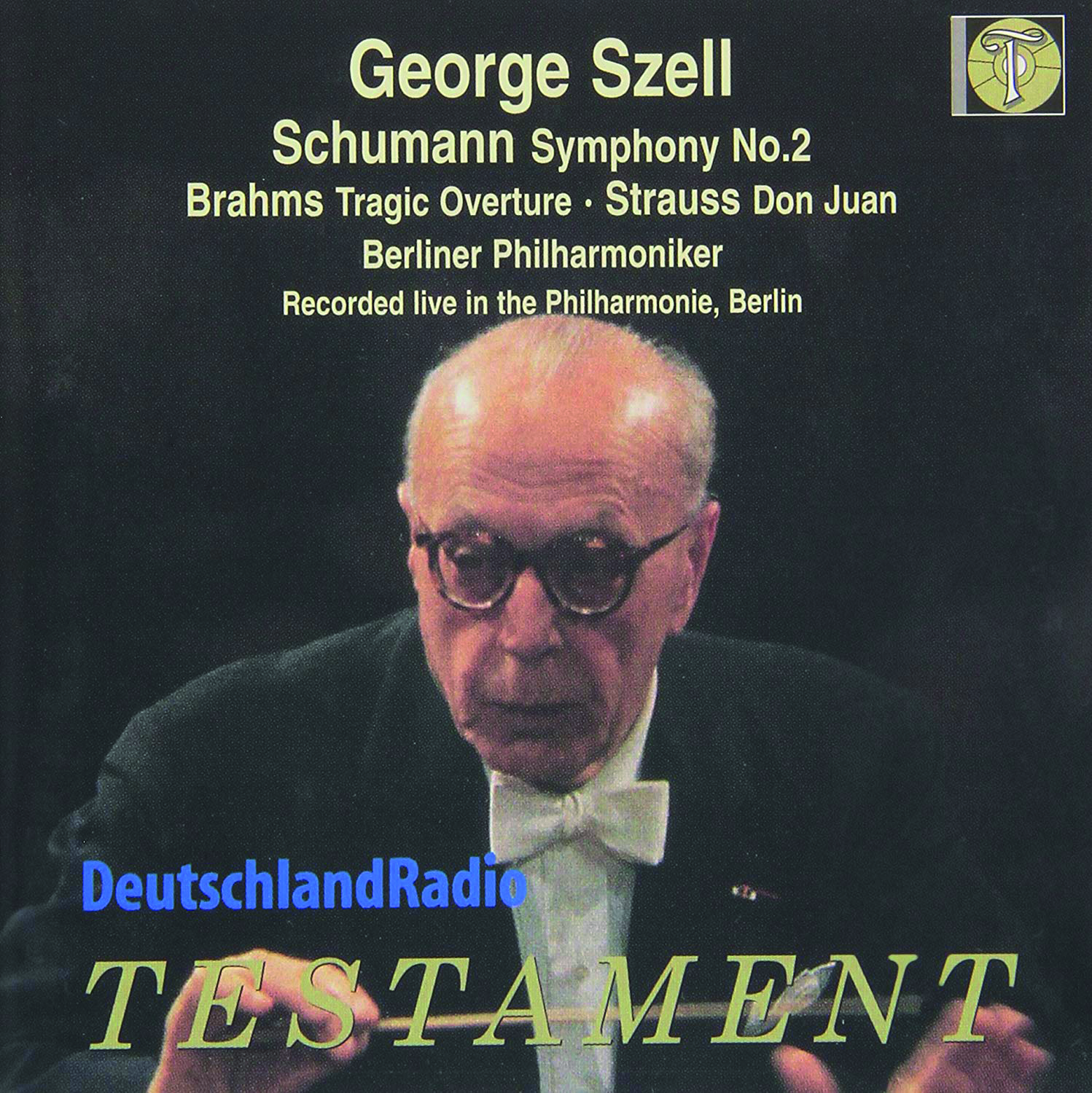
No less revealing of this dichotomy (if such it be) is George Szell, whose remake (8/63) was long an interpretative benchmark for this piece. He expounded at length about the veracity of Schumann’s scoring, defending it against Mahler’s reorchestration and instead thinning out the texture to clarify the woodwind contribution. Such is evident in this studio recording, the Cleveland Orchestra at its imperious best as though an elite force on strategic reconnaissance. Szell’s live performance with the Berlin Philharmonic is more accommodating to the music’s emotional ebb and flow, with appealing suavity in the Scherzo’s Trios and sustained pathos in the Adagio. Outer movements lack nothing in formal control or cumulative impetus, making for a thrilling close to Szell’s final European concert and one that should be on any shortlist.
The modern era
The turn of the 1970s saw several ‘big hitters’ taking on this piece as part of complete cycles. That by Georg Solti still impresses as much for the quality of the Vienna Philharmonic’s playing as for the recorded sound, though its rhythmic immediacy is not balanced by comparable expressive poise. That by Herbert von Karajan is reckoned the highlight of his Schumann traversal, yet not even the burnished splendour of the Berlin Philharmonic can offset a certain aloofness in response, eschewing the work’s ambiguities by ruling them out of the interpretative equation. That by Wolfgang Sawallisch is rightly admired for the unforced naturalness of its direction and similarly unaffected playing from the Dresden Staatskapelle; however, the thought arose on rehearing it that a certain impersonality could well have constrained more individual traits.
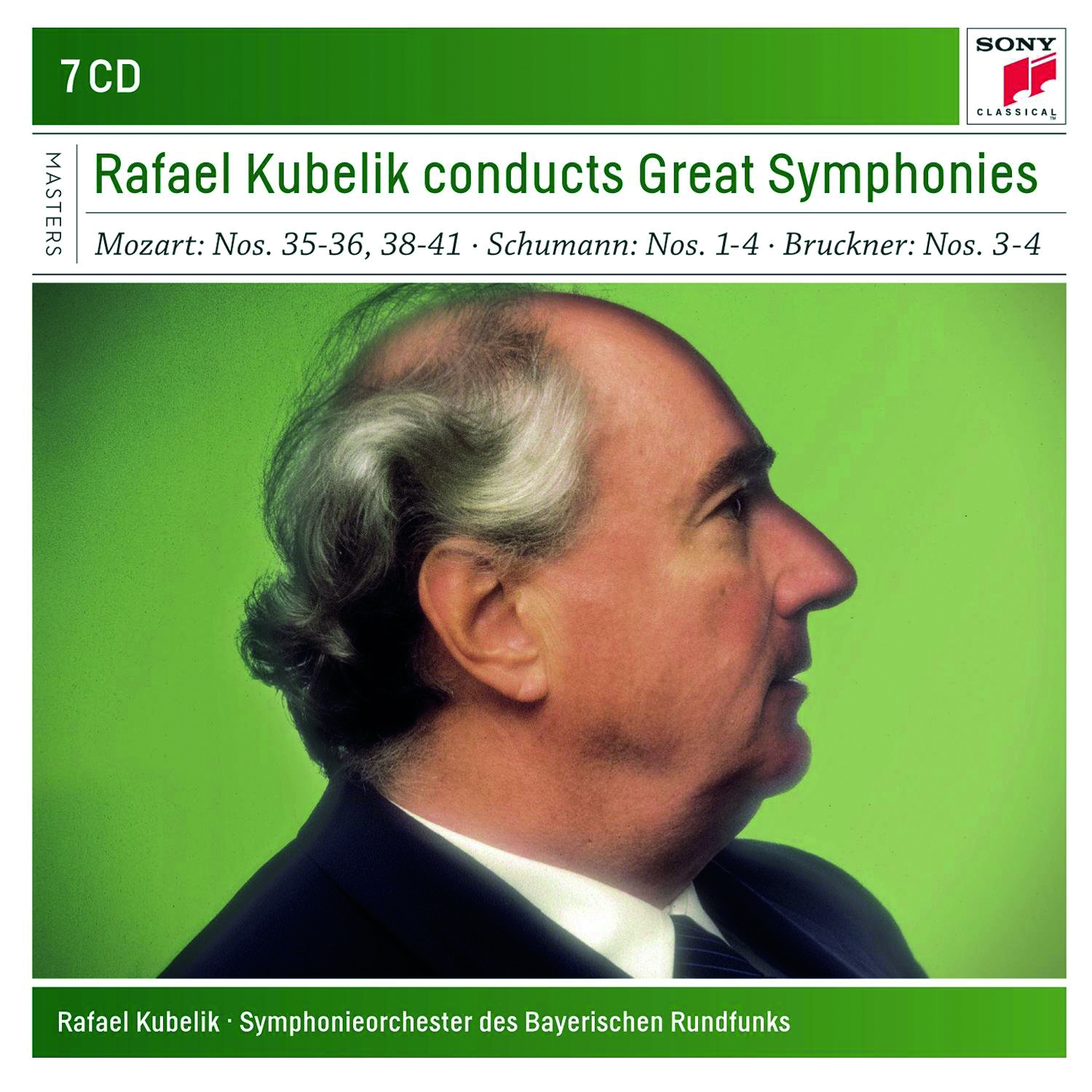
One reading of this era to have demonstrably improved with age is that by Rafael Kubelík. If the Bavarian Radio Symphony are not quite the equal of the Berlin Philharmonic, with whom Kubelík recorded his first Schumann cycle (8/65), their responsiveness to his distinctly personal vision is far more tangible. Listen to the codas of the first or third movements for playing that underscores Kubelík’s teasing a reticence and vulnerability even out of Schumann’s most resolute statements. Rob Cowan’s advocacy of this cycle over the decades was not misplaced.
Not all conductors have tackled Schumann’s Second successfully a further time. Riccardo Muti’s first traversal with the Philharmonia resulted in a vigorous and unmannered account, with strings a little rough in the Scherzo’s main theme but elsewhere (the finale in particular) an uninhibited verve that still makes compulsive listening. Forward two decades and Muti’s remake with the Vienna Philharmonic (8/96) brings immaculate playing and sophisticated sound but little in the way of an evolving or perceptive interpretation to justify the venture.
As for Giuseppe Sinopoli, his earlier account was determined by a psychological profile of the composer (discussed in his lengthy booklet essay) and results in an interpretation, ranging from sombre gravity to emergent elation, that resembles no other. Would something of this individuality were present in his remake (9/95), with its overtly generalised expression and playing from the Dresden Staatskapelle whose overheated response sounds at best simulated and at worst contrived. Not a reading (or cycle) by which to remember a singular conductor.
Conversely, Kurt Masur altered tack notably from his rather staid traversal with the Leipzig Gewandhaus (9/76) when recording them anew with the London Philharmonic. Incisiveness is the key to one of the deftest Scherzos yet realised, then an Adagio whose swiftness belies its impact, unfolding with seamless and cumulative intensity (likely recorded in a single take) that holds good throughout the effervescent finale. From a time when ‘authentic’ and ‘chamber’ versions were coming into fashion, Masur reaffirms the validity of a full orchestral response.
As too, in his more opulent manner, does Daniel Barenboim. His earlier version (4/78) found the Solti-era Chicago Symphony in combative form, making for a powerful while sometimes overbearing account that has not aged well. Without radically altering approach, his remake with the Berlin Staatskapelle brings an appreciably more sensitive response, the richness of its strings offset by limpid woodwind and sonorous brass in a reading which is the highlight of his second cycle: a timely reminder that ‘big band’ need not equate with blowsy or insensitive.
Old instruments, small bands
The vogue of period-instrument recordings came and went relatively swiftly. Early exponents such as Derek Solomons and the Authentic Orchestra (10/90) now sound like quaint period pieces, with Roy Goodman and the Hanover Band (3/95) characterful rather than convincing. Roger Norrington recorded the latter two symphonies with his London Classical Players, only tackling the cycle with the Stuttgart Radio Symphony – the Second (3/01) being a thoughtful reading, whatever his concept of ‘pure sound’ or the true extent of his adherence to the score.
John Eliot Gardiner nominally takes the palm for an ‘authentic’ rendering of acute rhythmic clarity and coursing animation, while not quite precluding a more considered response to the music’s overly introspective or ambivalent aspects. If, ultimately, his pulsating virtuosity feels too much its own justification, Philippe Herreweghe’s more understated while more probing approach should not be found wanting, abetted by playing of real finesse, with an emphasis on detail that is never intrusive: Schumann the ruminative poet rather than histrionic dramatist.
Nikolaus Harnoncourt opted for the Chamber Orchestra of Europe, with whom he had earlier recorded an incendiary Beethoven cycle. If his Schumann is less striking, this surely lies in the nature of the music rather than any interpretative shortcomings. Rhythmic quirks or over-emphases are few in a reading attentive to both those heroic and introspective aspects of the composer’s muse. After this, the frequently brash extroversion of Yannick Nézet‑Séguin’s account with the COE (5/14) becomes overbearing well before its grandstanding peroration.
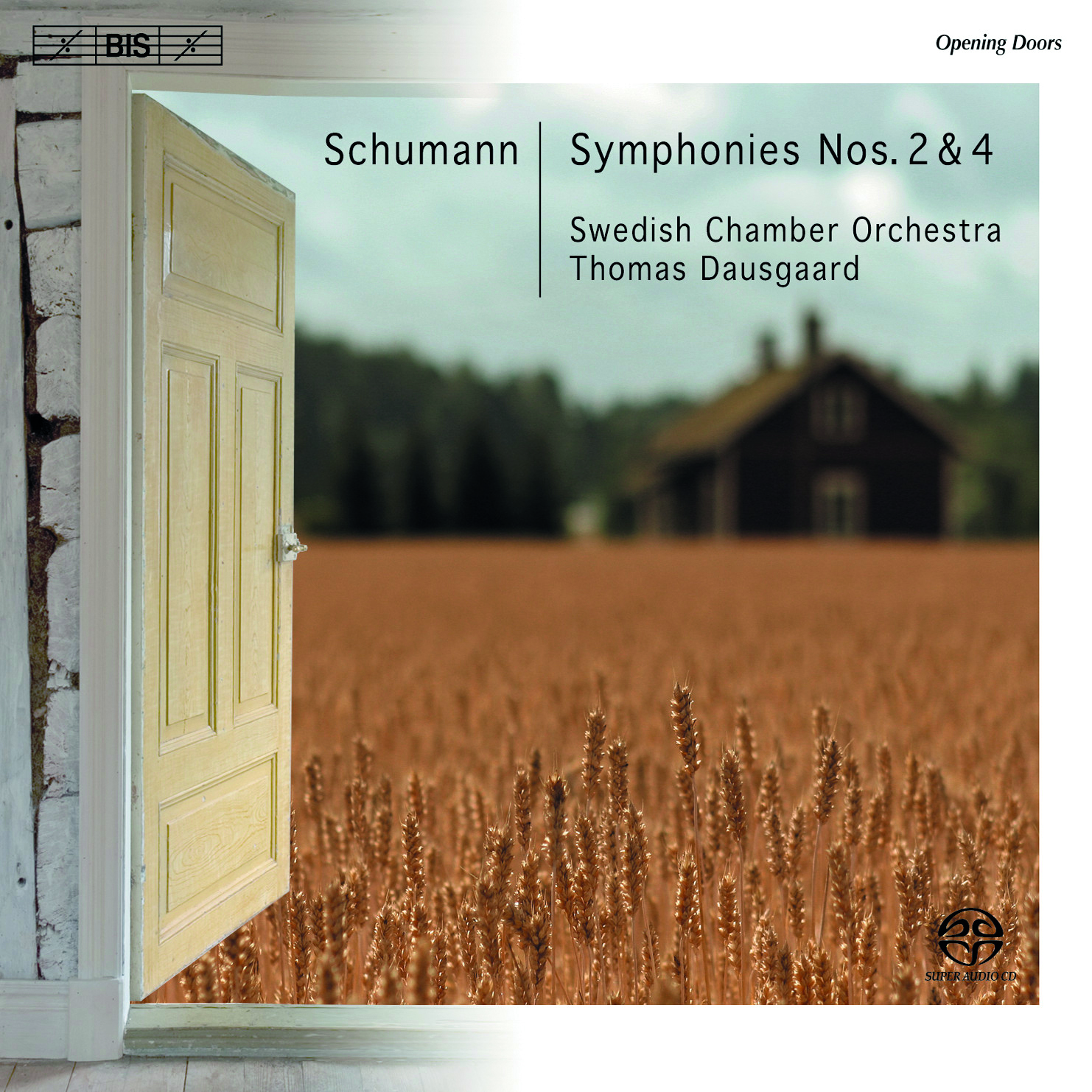
Smaller ensembles are prominent in later Schumann cycles, that from Thomas Dausgaard and the Swedish Chamber Orchestra standing out for its clarity of texture and sharpness of articulation, yet also for its subtlety of phrasing which never sells this music short. Here the lithe energy generated in the outer movements is complemented by the deftness of the Scherzo’s Trios and harmonic lambency of the Adagio; Dausgaard’s handling of momentum in the finale is an object lesson in resourcefulness. By comparison, the refinement Claudio Abbado (A/13) gets from Orchestra Mozart cannot avoid that encroaching blandness common to other of his late recordings. Robin Ticciati (9/14) secures a more differentiated response from the Scottish CO but his fastidious approach lacks the emotional presence of Dausgaard.
The past decade has brought no slackening in new recordings or interpretative approaches. The Second is a highlight of Sakari Oramo’s cycle with the Royal Stockholm Philharmonic – an unexpectedly weighty account, not least an Adagio whose emotional depth is heightened by unfolding at an unbroken pulse, then a finale whose ultimate elation seems the greater for being so hard-won. A pity Oramo overrides the metrical consistency of the first movement’s final chords, something previously heard on Leopold Stokowski’s freewheeling 1950 version (11/02). Fabio Luisi gets this just right on his imposing ‘central European’ version, in which the Vienna Symphony need not fear comparison with any local rival. If there is a failing, it is in his rather dour take on a finale which clinches the formal design but not its expressive trajectory. Michael Gielen is occasionally guilty of over-earnestness, though his unerringly conceived account, eloquently played by the SWR Symphony, tangibly integrates all four movements into an unbroken and cumulative unity. A pity this Schumann cycle remained incomplete.
Such unity is not absent from Simon Rattle’s version (7/14), yet his self-conscious approach, with its over-attention to detail and polished if low-key response by the Berlin Philharmonic, offsets a firmer recommendation. Preferable are Frank Beermann and the Robert Schumann Philharmonie of Chemnitz, using an edition by Joachim Draheim which clarifies various textural ambiguities in a taut but flexible reading that neither skimps on this music’s emotional affect nor constricts its inherent dynamism; part of yet another cycle to have fallen under the radar.
Antonio Pappano (10/16) secures a generous response from his Santa Cecilia forces (strings especially) yet there are no revelations here, nor with Michael Tilson Thomas’s stylish traversal (11/17) in San Francisco, akin to David Zinman and the Zurich Tonhalle (5/04) in impressing more as the result of a fruitful long-term association than for genuine insight. More absorbing than either is Ivor Bolton and the Dresden Festival Orchestra, its fusion of period astringency and interpretative alacrity rendering Schumann’s orchestration (not least his timpani-writing) in a persuasive light. Still in Dresden, Christian Thielemann secures burnished playing from the Staatskapelle that, avoiding the wilfulness of his Philharmonia account (1/98), exudes an ambivalence and even agitation Pfitzner would surely have appreciated nine decades before.
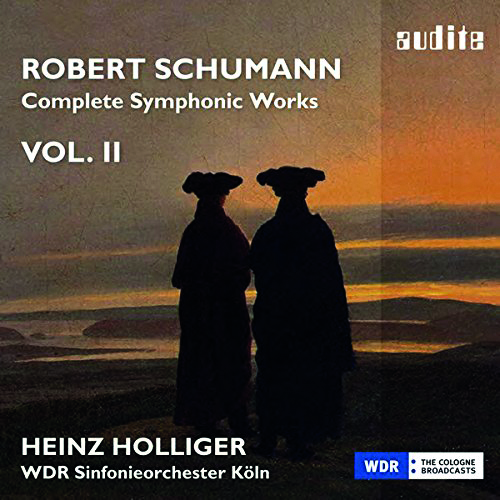
This leaves Heinz Holliger with the WDR Symphony of Cologne as prime recommendation. Long crucial to his work as composer and conductor, Holliger’s Schumann has all one might wish for – the leanness of a chamber orchestra, impact of larger forces, clarity of an authentic approach and creative acumen of one conscious of his role as being more than merely putting musicians through their paces. Some examples from each movement illustrate this: in the first, his emphasis on the Un poco più vivace transition (1'54") as it prepares for then motivates the ensuing Allegro; in the Scherzo, his consistency of pulse which integrates the Trios (1'39" and 4'15") and underlies the (relative) acceleration into the coda (6'24"); in the Adagio, his handling of the spectral interlude (3'57") that links each half while emotionally heightening the latter; and, at 4'00" in the finale, after the movement has reached near-stasis, his winsome underlining of the quotation from Beethoven’s song ‘Nimm sie hin denn, diese Lieder’ (the last of the cycle An die ferne Geliebte) which then makes possible the ultimate affirmation.
Almost 175 years since its completion, Schumann’s Second Symphony can, more than ever, be heard as the true embodiment of musical mid-Romanticism, as well as being the salient symphonic achievement from that interregnum stretching between Schubert and Bruckner.
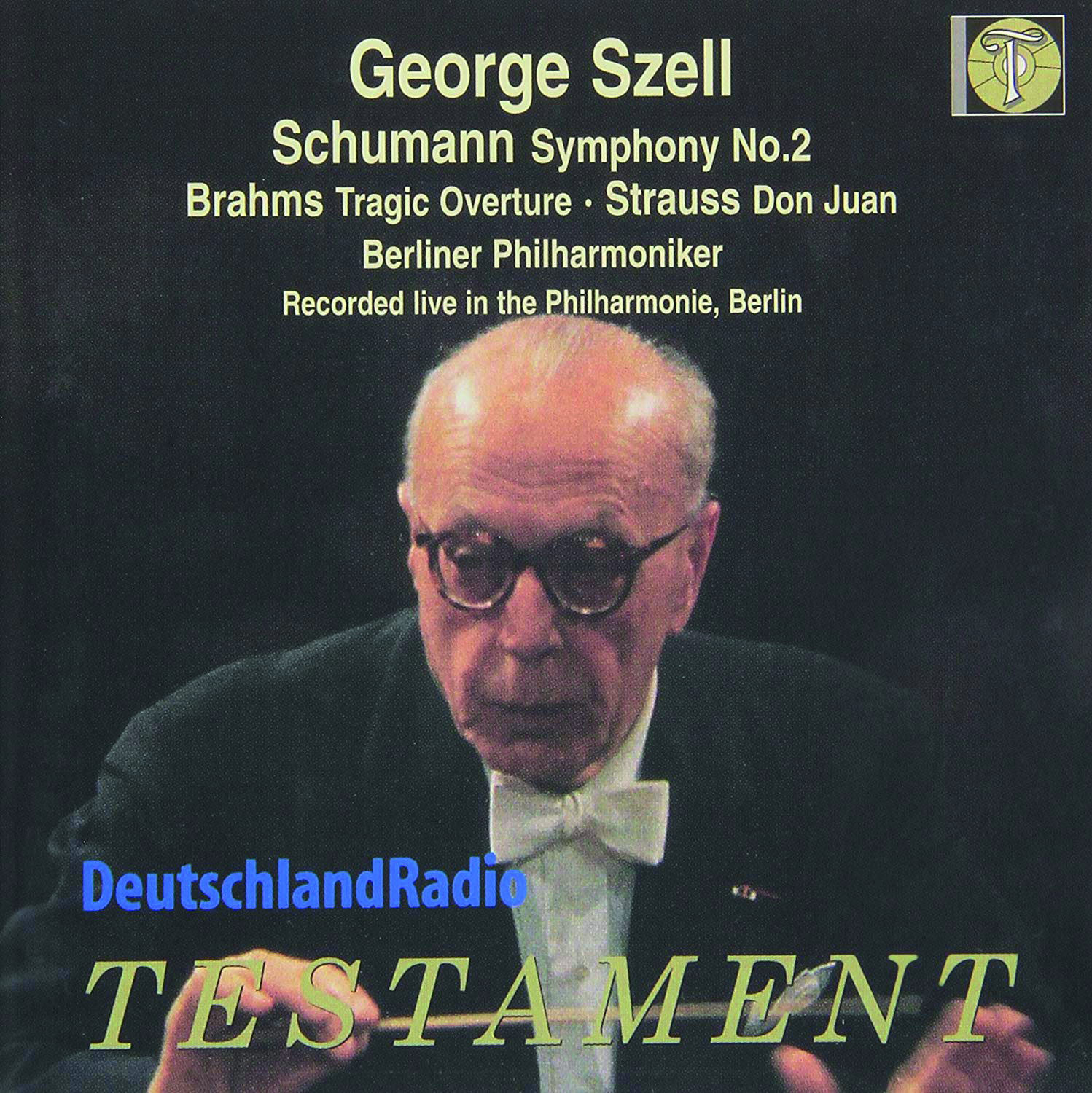
THE LIVE CHOICE
BPO / George Szell
(Testament)
Szell’s reputation for removing all trace of spontaneity from his studio recordings has been overstated, yet this account from Berlin reveals an intuitive response that is only possible in the live context. Compulsive music-making.
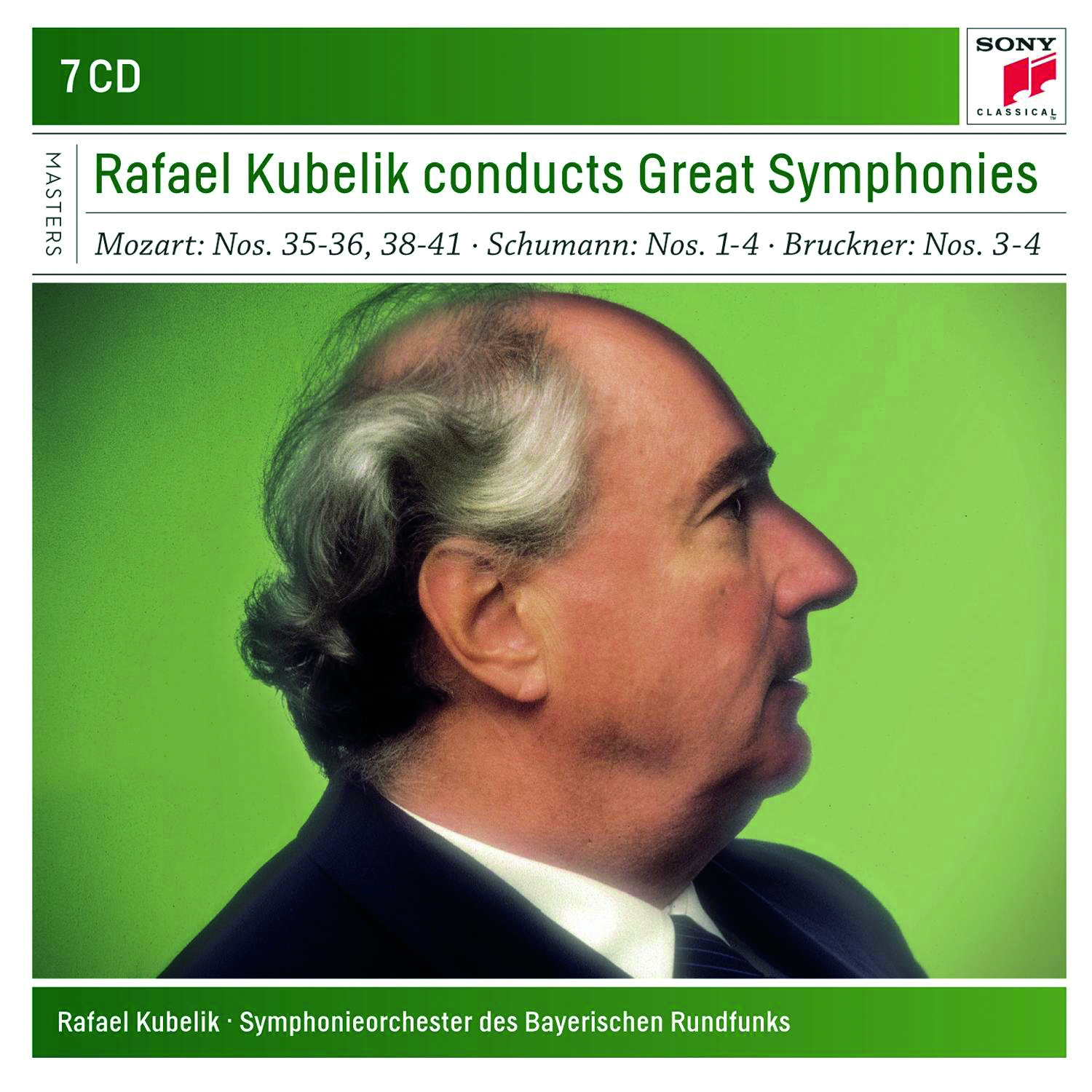
THE CLASSIC CHOICE
Bavarian RSO / Rafael Kubelík
(Sony Classical)
His Berlin cycle may be technically more secure but Kubelík’s later Munich traversal has greater humanity, allowing his never- indulgent approach freer rein. This ‘dark horse’ among Schumann cycles has become an acknowledged classic.
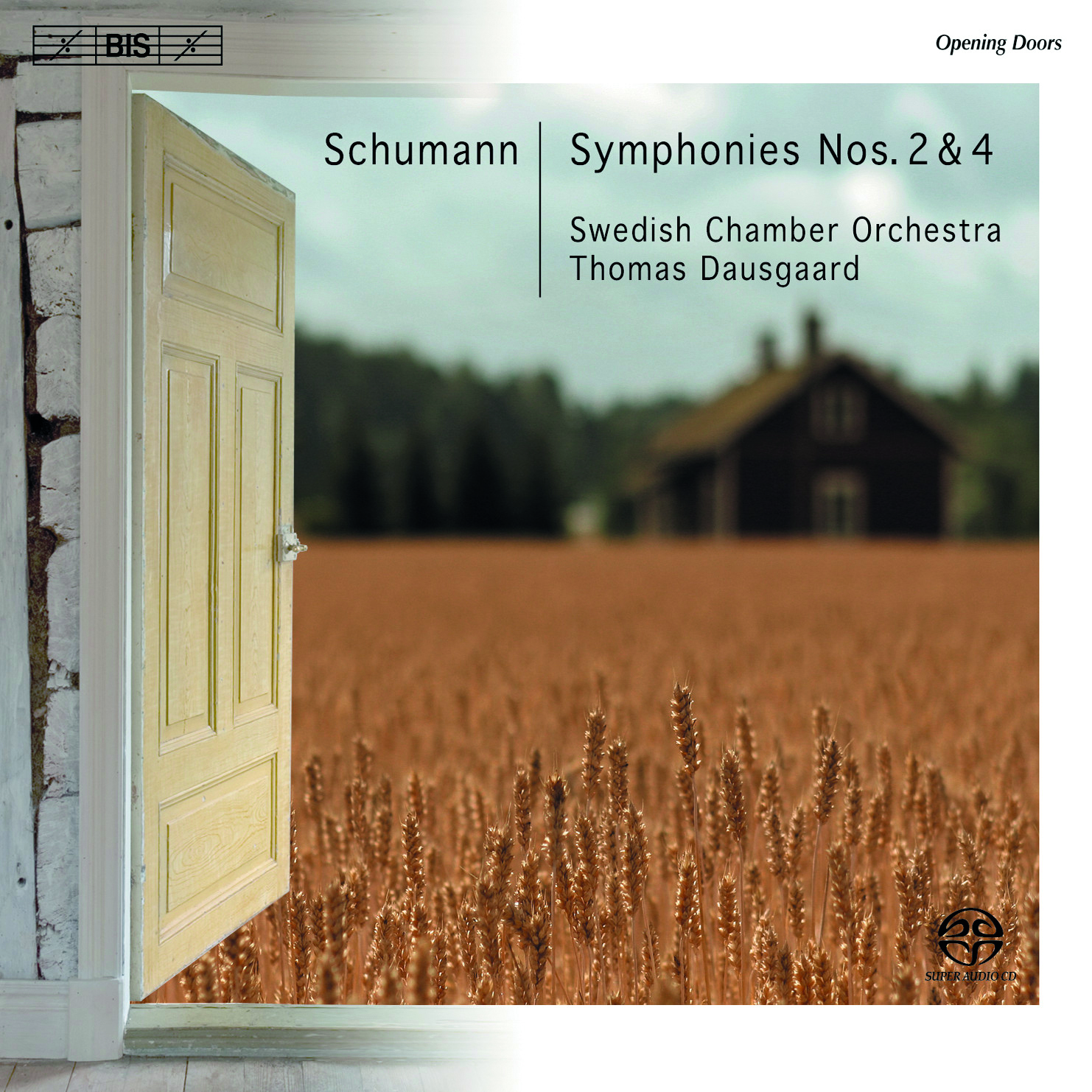
THE CHAMBER CHOICE
Swedish CO / Thomas Dausgaard
(BIS)
Schumann cycles with chamber forces have proliferated over recent years. That from Thomas Dausgaard and the Swedish Chamber Orchestra is still the finest in its astute combination of textural clarity and expressive immediacy.
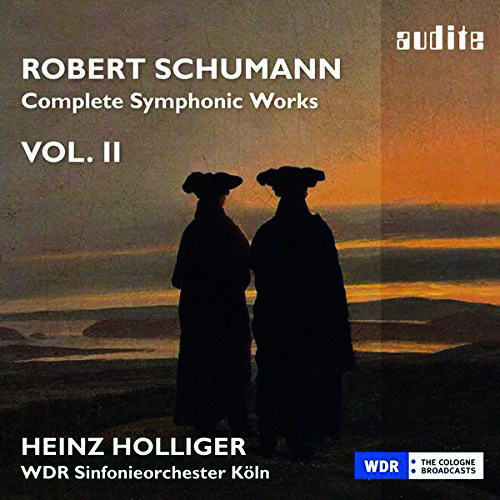
THE ULTIMATE CHOICE
WDR SO Cologne / Heinz Holliger
(Audite)
Schumann has long been central to Heinz Holliger’s creative thinking. His Cologne account – part of the most inclusive overview of Schumann’s orchestral works to date – fuses chamber-like clarity, authentic-style astringency and full-orchestral immediacy for astounding results.
Selected discography
Date / Artists / Record company (review date)
1937 New York Philh SO / Enescu Opus Kura OPK2112/3
1941 NBC SO / Toscanini Naxos 8 110836/7 (8/00)
1954 VPO / Mitropoulos Orfeo C627 041B (6/05)
1968 New Philh Orch / Klemperer Testament SBT1482 (8/13)
1969 VPO / Solti Decca 448 930-2DF2 (12/70, 8/99)
1969 BPO / Szell Testament SBT1378 (12/05)
1971 BPO / Karajan DG 477 7932GB3 (9/72, 7/90)
1972 Staatskapelle Dresden / Sawallisch Warner Classics 2564 60759-4 (2/74, 11/93)
1977 Philh Orch / Muti Warner Classics 371497-2, 097993-2 (2/79)
1978 Bavarian RSO / Kubelík Sony Classical 88697 88411-2 (10/79, 7/93)
1983 VPO / Sinopoli DG 410 863-2GH (4/84)
1985 VPO / Bernstein DG 453 049-2GTA2 (11/86)
1990 LPO / Masur Warner Classics 0927 49814-2 (12/91)
1995 COE / Harnoncourt Warner Classics 2564 69928-5 (11/96)
1996 Champs-Élysées Orch / Herreweghe Harmonia Mundi HMG50 8190/91 (9/96)
1997 Orch Révolutionnaire et Romantique / Gardiner Archiv 457 591-2AH3 (6/98)
2003 Staatskapelle Berlin / Barenboim Warner Classics 2564 61179-2 (5/04)
2005 Swedish CO / Dausgaard BIS BIS-SACD1519 (5/07)
2008 Vienna SO / Luisi Orfeo C717 102H (9/10)
2009 Royal Stockholm PO / Oramo Sony Classical 88697 43707-2 (9/10)
2010 SWR SO Baden-Baden & Freiburg / Gielen Hänssler Classic CD93 259
2010 Robert Schumann Philh / Beermann CPO CPO777 536-2 (12/10)
2012 WDR SO Cologne / Holliger Audite AUDITE97 678 (10/14)
2015 Dresden Fest Orch / Bolton Sony Classical 88985 37212-2 (2/17)
2018 Staatskapelle Dresden / Thielemann Sony Classical 19075 94341-2 (7/19)
This article originally appeared in the September 2019 issue of Gramophone. Never miss an issue – subscribe today!











